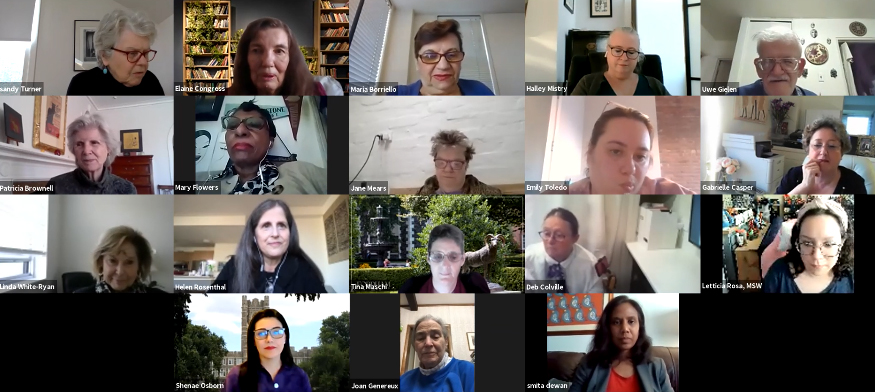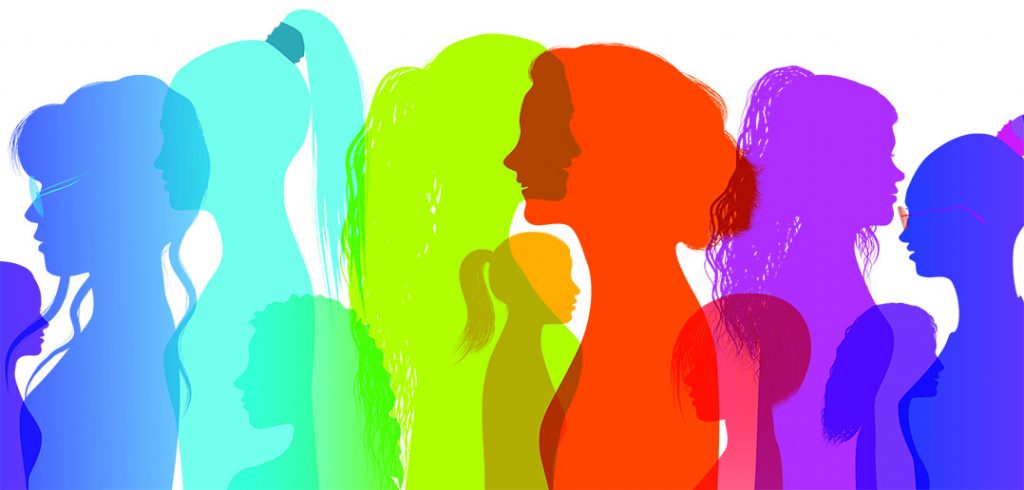At the 20th anniversary conference for the Fordham Institute for Women and Girls, speakers from New York City to Sydney prioritized equity over equality and noted the former’s potential to level the playing field for women—and women of color in particular.
Elaine Congress, Ph.D., associate dean and professor at the Graduate School of Social Service (GSS) and the institute’s co-founder, noted that the event was being held concurrent with the meeting of the Commission on the Status of Women at the United Nations. In taking the name “The Many Faces of Empowerment,” the GSS conference mirrored the commission’s focus on “women’s full and effective participation and decision-making in public life, as well as the elimination of violence, for achieving gender equality and the empowerment of all women and girls,” she said.
To better capture a global outlook, the March 20 virtual evening event was held in partnership with the Sydney School of Medicine at the University of Notre Dame in Australia, where it was already the morning of March 21. Nearly 100 students, academics, and practitioners tuned in to Zoom to view several presentations, including: MSW students Shadequa Hampton and Jolisa Beavers on racial justice, GSS professors Tina Maschi, Smita Dewan, and institute co-chair Sandy Turner on “Feminine Power, Politics. Peace and Prosperity,” and on other subjects that ranged from advocacy to climate change.

Gabrielle Casper, a professor of obstetrics and gynecology at Notre Dame and a recognized expert on women’s health and violence against women, drew the distinction between gender equality and gender equity.
“Gender equality means equal treatment of women and men in laws and policies and equal access to resources and services within families, communities, and society at large,” she said. “Gender equity means fairness and justice in the distribution of benefits and responsibilities between women and men.”
Casper pointed out that equality means very little without equity. As an example, she cited statistics provided to her by a medical colleague who treated boys and girls after a brutal war in Sierra Leon in which tens of thousands of young women and children were abducted in January 1999. In 2001, the physician found that 83% of the girls he treated had been raped and 39% were gang-raped. Fifty percent were beaten and physically assaulted. Some of the girls, aged 12 to 14, were pregnant. Yet funding at the medical center provided boys and girls equal time of about 20 minutes for medical consultation with doctors, though it was clear that the girls needed far more care. It was equal, but not equitable.
Houry Geudelekian, chair of the NGO Committee on the Status of Women, said she wholeheartedly concurred with Casper’s analysis of equality versus equity, particularly as it relates to intersectionality, where race, class, gender, and other identities overlap. She said problems of equity in the U.S. are exacerbated when race is factored in.
“These problems have been happening since the 1940s, in the ’50s and the ’60s, every decade we keep going back to the same issues that we’re not able to solve,” she said. “So, we need to bring in the racism aspect into gender equality because of the intersectionality. Ageism, sexism, racism, all of the isms that you can imagine should be addressed.”
New York City Council Member Helen Rosenthal agreed that while every issue the city faces, from transportation to jobs to primary care, should be viewed through the lens of equity for women, race should also factor in. She pointed out that 35% of households in New York City are led by a woman of color. One law she sponsored addressed what she referred to as the “most horrible statistic”: Black women are eight times more likely to die of pregnancy-related causes than white women.

She noted that the mayor is a white male, as is the city council speaker. Overall, men make up 73% of the city council, even though women make up 53% of the population. White men are just 16% of the city’s population.
“Public policy would more than likely change if our leadership were more akin to the New York City population,” she said.
In order to attain gender equity, she said that she has had to propose laws that one might not think would be necessary—such as requiring the NYPD Special Victims Unit to be trained in how to speak with survivors of sexual assault, a law which has yet to be implemented, she said.
“That’s the reason why women and LGBTQ non-binary people will still not go to the NYPD,” she said.
Before the city cheered on front-line workers of the pandemic, 85% of the women employed at hospitals had been sexually harassed on the job, she said.
“If you’re a woman of color, you’re much more likely to be sexually harassed and diminished in a variety of ways, so we have to pass legislation to try to fix this,” she said.
She then proposed one potential remedy.
“You know, this June, June 22, we’re going to be having a municipal election,” she said.
“There are three terrific women who are running for mayor and there are a lot of women running in the local City Council races.”


